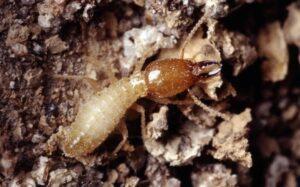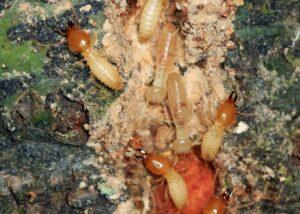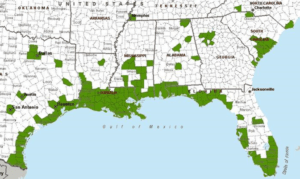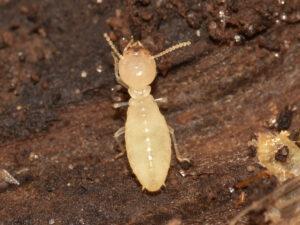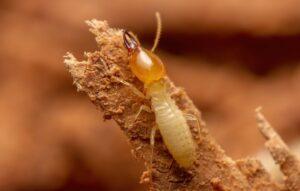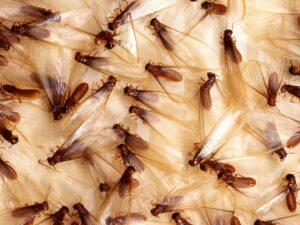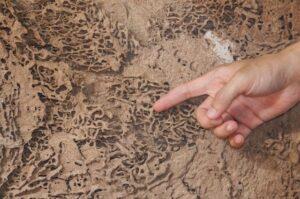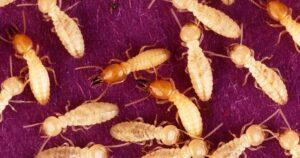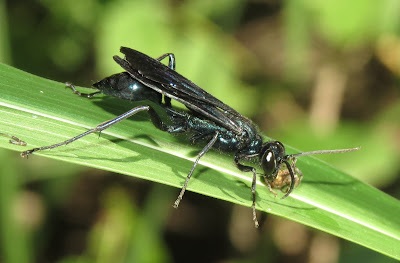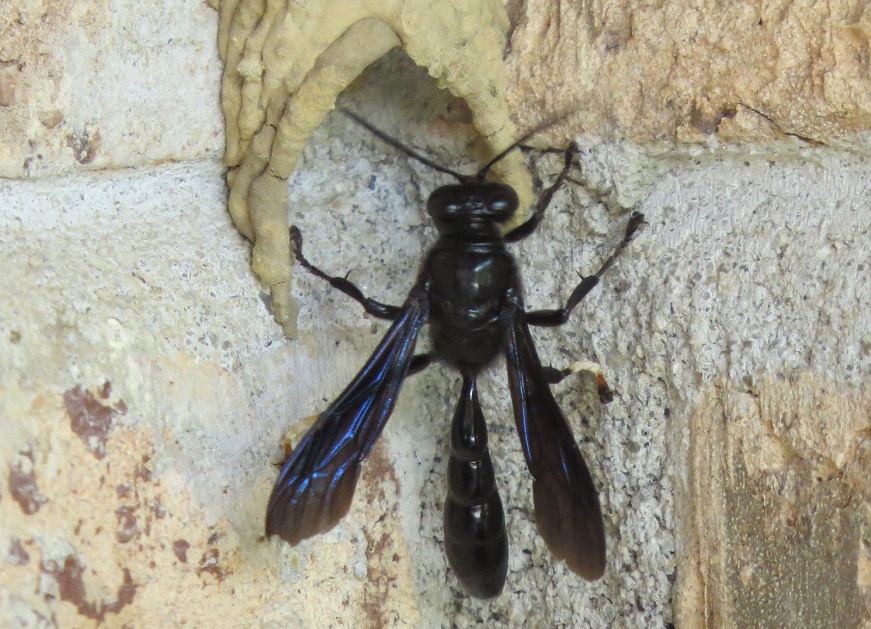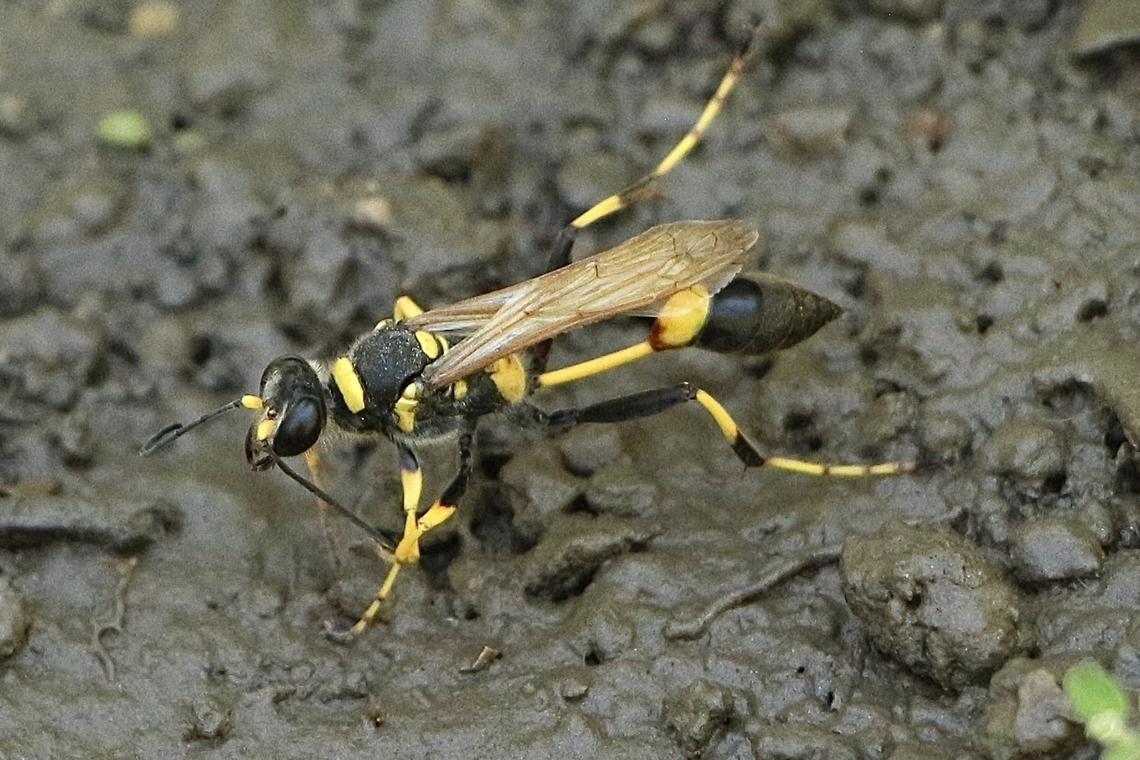Formosan Termite (Coptotermes formosanus)
Updated on
17/11/2022The Formosan termite, or Formosan subterranean termite, also called the super termite, is one of the most destructive species of termites, having a wide range occurring throughout the world. It acquired its name after Formosa since it was described first in Taiwan during the first half of the 20th century. However, it existed long before its discovery being a native of southern China. It was introduced in Japan before the 17th century and in Hawaii in the second half of the 19th century. In South Africa and the United States, Formosan termite sightings happened in the 1950s and the 1960s.
Scientific Classification
- Class:Insecta
- Order:Blattodea
- Family:Megachilidae
- Genus:Rhinotermitidae
- Species:C. formosanus
Conservation Status
Description
These subterranean termites have three forms of castes in a colony – the reproductives (the king, queen, swarmers or alates, and nymphs or immature alates), the workers, and soldiers. The alate’s and soldiers’ physical features appear more prominent than the workers’. The alates appear yellowish-brown 12-15 mm long. They even have a hairy appearance on their wings.
The soldiers of this species have a white body, orange-brown oval-shaped head rounded to the sides, tapering to the front, and curved mandibles devoid of teeth.
The workers have a white or off-white body, not easily distinguishable from other termite species.
Distribution: Native – Southern China, Taiwan; Invasive – Japan, South Africa, Hawaii, Louisiana, South Carolina, Texas, Florida, Georgia, Alabama, Mississippi, California, Tennessee
Habitat: Inside homes, live trees, wooden structures, crops
Do They Bite / Sting: Only when disturbed, with their bite being painful due to strong mandibles mostly leaving a tiny reddish bump on the skin
Lifespan: Queen – 15 years; Workers and soldiers – 3-5 years in the ratio 9: 1 (worker: soldier)
Predators: Ants and even humans
Behavior and Characteristics
Social group
These social insects make their colonies either underground or over the ground. In their caste system, most of the members belong to the group of workers whose responsibility lies in nurturing the clan with food. The soldiers, making up 5-10% of the colony, safeguard the nest against any danger. They appear more aggressive than the soldiers of other subterranean termites, going to the extent of excreting a secretion from their fontanel gland in front of their heads. On the other hand, the reproductives’ work includes breeding the colony members.
Nests/ Colonies
Belonging to the group of subterranean termites, they build their nests underground that comprise several tunnels or mud tubes that they use to reach the wooden structures. However, they can also make their nests above the ground when the ground becomes unsuited.
The nests above the ground are primarily aerial, measuring up to a few cubic meters, constructed using soil, saliva, fecal material, and chewed wood. In a matured colony, one could spot several termites together. However, older colonies mainly comprise workers having an increased body mass, whereas, in younger colonies, light-weighted workers are present.
Diet
They feed on wood fiber like cardboard and paper, which contain cellulose. These termites consume crops like sugarcane and live trees such as water-bound cypress, ash, and oak. The presence of bacteria within their digestive system facilitates the easy digestion of the cellulose ingested by these termites, providing adequate nutrition.
It was noted that colonies feeding on red gum and pecan produced more offspring than those consuming other wood species. Moreover, the progeny of the colonies with American ash and pecan as their diets survived longer than those who ate other wood species. Thus, the colonies’ fitness depended on the trees they ate.
Life Cycle
More than 70 000 alates are produced in a single colony, which eventually shed their wings after flying for a short period. The female Formosan termites look for nesting sites to lay eggs, and the males accompany them in this endeavor.
1. Egg Stage
After a pair of male and female termites creates a chamber inside a moist crevice with several wooden materials, around 15-30 eggs are laid. The eggs hatch into young termites in two to four weeks.
2. Juvenile Stage
The reproductives look after the first batch of young until they reach the third instar stage. Then, after one or two months, the queen lays a batch of eggs for the second time. The second batch, however, is not nurtured by the reproductives. Instead, the termites of the first batch take care of them.
Damage Caused by Them
Due to the increased population of Formosan termites, they are likely to cause much structural damage to the wood in a shorter period than other subterranean termites. In severe infestation, the wood becomes hollow, leaving behind a thin surface. The hollowed wood mostly has a peeled or blistered texture. Another sign of a Formosan mite infestation is the presence of carton nests beneath sinks and in between walls. Those making their colonies underground mostly enter through cracks and joints. In the case of aerial infestation, flat roofs of high rises are one of the preferred spots of these termites. They attack living plants and non-cellulose materials like plastic, plaster, and asphalt.
The infestation of Formosan mites has incurred significant economic losses in places like Hawaii, costing the residents around $100 million per year for adapting preventive measures.
Getting Rid of Formosan Termites
Exposing the wooden furniture helps in getting rid of the moisture. This is an effective termite control as the termites prefer a dark and moist habitat and cannot thrive in highly sunny conditions. Spraying boric acid on the affected areas is another effective anti-termite treatment. Applying orange and neem oils on the infested wood also help kill termites quickly.
FAQs
The Formosan termites make nests under the soil, forming mud tubes, but the dry wood termites don’t do so. They don’t need much moisture to survive and make their nests inside the wood. The drywood termites have a smaller colony with a few hundred members than the Formosan termite, which has millions of members. The dry wood termite attracts to drier wood than the Formosan termites, which prefer a moistened habitat.
Both are subterranean termites, their color being one of their significant identifying differences. The Formosan termite has a translucent orange body, while the eastern subterranean termite appears grayish brown.
Source
lsuagcenter.com, entomologytoday.org, pestworld.org, usatoday.com, lsuagcenter.com, patriotpestprescott.com, natgeofe.com, mabi-usa.com




